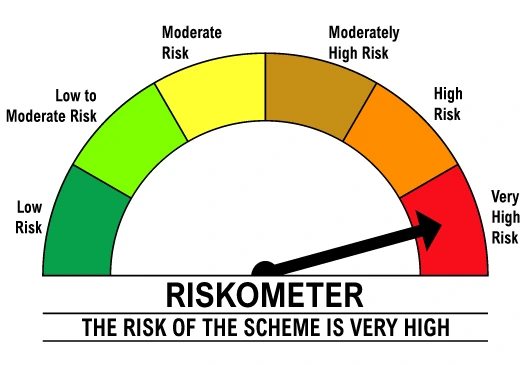11.49 lakh people have invested in this fund
11.49 lakh people have invested
in this fund as of
Total AUM
₹16,217.91 crores
as of Mar 31, 2025
Age of Fund
18 years 2 months since Jan 18, 2007
Expense Ratio
1.66%
as of Apr 11, 2025
Exit Load
Nil
Ideal holding period
10 Years+ / 3 years lock-in
Top holdings
HDFC Bank Limited
7.28%
ICICI Bank Limited
6.08%
Axis Bank Limited
4.99%
State Bank of India
4.23%
Kotak Mahindra Bank Limited
3.65%
Allocation by Market Cap
Large Cap
67.40%
Mid Cap
18.80%
Small Cap
14.10%
Top Sectors
Banks
Pharmaceuticals & Biotechnology
It - Software
Telecom - Services
Finance
Top holdings
No Data to display
Top holdings
TREPS / Reverse Repo Investments
5.10%
Cash & cash equivalents
0.00%
Instrument break-up
TREPS
100.00%
Portfolio turnover ratio
0.34 last 12 months
Performance highlights over last
for
investment
Cumulative returns on
Annual returns
Current value
Historical Returns (As per SEBI format)as of with investment of₹10,000
| This fund | NIFTY 500 TRI ^ | NIFTY 50 TRI # | ||||
|---|---|---|---|---|---|---|
| CAGR | Current Value | CAGR | Current Value | CAGR | Current Value | |
Income distribution Cum Capital Withdrawal (IDCW) Distributed
| Record Date | Face Value | IDCW per unit | NAV Before | NAV After |
|---|
| Funds | Annual returns | Current Value | Absolute Growth |
|---|
Date of allotment: Jan 18, 2007.
Period for which fund's performance has been provided is computed based on last day of the month-end preceding the date of advertisement
Different plans shall have a different expense structure. The performance details provided herein are of Regular Plan.
Since inception returns have been calculated from the date of allotment till June 30, 2021
Past performance may or may not be sustained in future and should not be used as a basis for comparison with other investments
Rolling returns have been calculated based on returns from regular plan growth option.
Pursuant to payments of Income Distribution cum Capital Withdrawal, the NAV of the IDCW option(s) of Schemes would fall to the extent of payout, and statutory levy, if any.
^ Fund Benchmark # Additional Benchmark

Rohit Singhania
The primary investment objective of the Scheme is to seek to generate medium to long-term capital appreciation from a diversified portfolio that is substantially constituted of equity and equity related securities of corporates, and to enable investors avail of a deduction from total income, as permitted under the Income Tax Act, 1961 from time to time.
There is no assurance that the investment objective of the Scheme will be realized.
An open ended equity linked saving scheme with a statutory lock in of 3 years and tax benefit
Level of Risk in the fund

An Equity Linked Savings Scheme (ELSS) is a diversified equity mutual fund scheme which is eligible for tax savings investments under Sec 80C of the Income Tax Act 1961. Taxpayers can avail a tax deduction of up to Rs 1.5 lakh annually by investing in ELSS. ELSS funds have a lock-in period of 3 years; investors cannot redeem thier ELSS units before the completion of 3 years from the investment date. For ELSS investments through SIP, each SIP instalment is locked in for 3 years. ELSS funds offer investors triple benefits of tax savings, potential capital appreciation over long investment tenures and tax efficient returns.
Potential for Capital Appreciation: ELSS funds predominantly invest in equities and equity-related instruments. Historical data shows that equity as an asset class has the potential to deliver superior returns compared to fixed income investments.
The DSP Tax Saver Fund offers tax benefits under Section 80C of the Income Tax Act 1961. Investors can claim deductions of up to Rs 1.5 lakh from their taxable income by investing in ELSS. Taxpayers can save up to Rs 46,800 in taxes by investing in DSP Tax Saver Fund. Since ELSS investments are locked in for three years, capital gains made by the fund gains are subject to Long-Term Capital Gains Taxation. Capital gains of up to Rs 1 lakh in a financial year are tax-free; capital gains exceeding Rs 1 lakh are taxed at 10%. The tax treatment of ELSS makes it one of the most tax-efficient investments under Section 80C.
You should invest in the DSP tax-saver Fund because of the following benefits:
Click on the green INVEST button on the left-hand side of the webpage (Click here). If you are an existing DSP Mutual Fund, you can start investing straight away. If you are new to DSP Mutual Funds, you will have to create a portfolio by filling out the necessary details. If you are new to Mutual Funds, you will have to complete KYC requirements. Follow the on-screen instructions to get started. You can also invest in DSP Tax Saver Fund through your mutual fund distributor.
Returns from ELSS investments can vary widely and are influenced by market conditions, economic factors, the investment strategy of the fund manager and the investment horizon. Historical data shows that over long investment tenures, usually 5 years or longer, ELSS funds have the potential of outperforming traditional fixed income tax saving investments. However, there is no guarantee of returns in ELSS funds. Investors should be prepared to hold thier investments for long tenures to get higher returns.
Investors can check the past performance of DSP Tax Saver Fund by clicking on the (Click here) section to see the returns of the DSP Tax Saver Fund. One can check both lump sum and SIP returns. We have shown how DSP Tax Saver Fund has performed versus its benchmark index (Nifty 500 TRI) and its additional benchmark (Nifty 50 TRI) over last 1, 3, 5 years and since inception. One should always evaluate an equity fund?s performance over long investment periods.
11.49 lakh peoplehave invested in this fund as of